EMF Trading
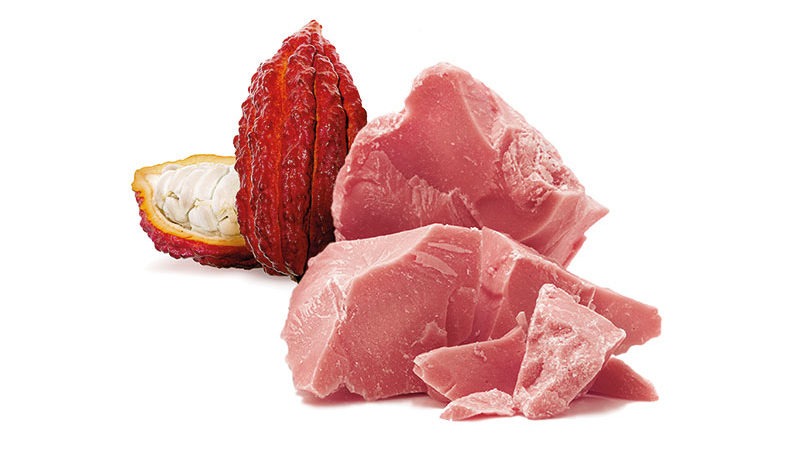
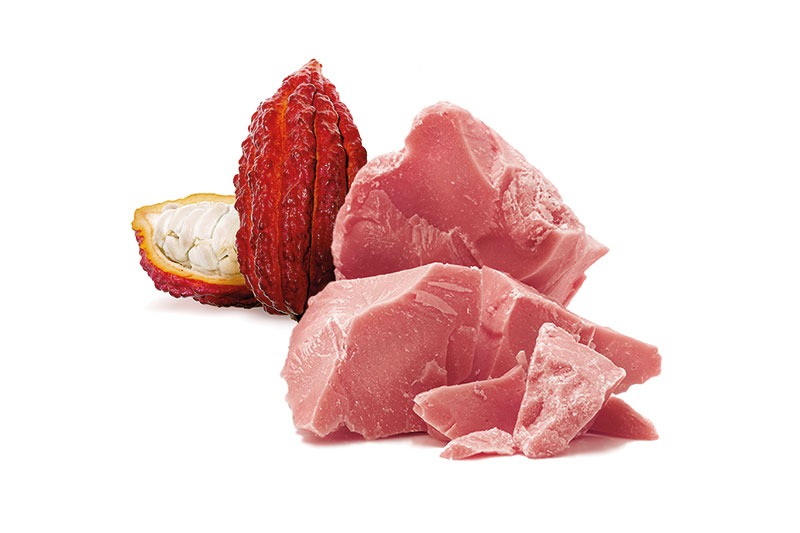
If you thought chocolate offerings were limited to dark, milk or white varieties, it’s time to think again; today’s alternatives are as diverse as they are delicious, encompassing a vast range of exotic ingredients and even a landmark, fourth Ruby variety. HN delves deeper into the latest developments on the cocoa bean scene
Times have been tough for cocoa farmers in recent years, with an abundant supply and weakening demand combining to push down prices across the industry. While lower prices should spell good news at the other end of the chain for chocolate manufacturers, they too have faced their own challenges, which range from an increasingly health-conscious consumer base to fierce competition within the sweet-treat market. Yet there have been positive signs for the industry; annual global retail consumption of chocolate confectionery has remained steady, reaching 7.3 million tons in 2015/2016, according to data compiled by Euromonitor, with forecasts suggesting it will rise to approximately 7.7 million tons by 2018/2019. Production also looks to be rallying. Figures from the UN Food and Agriculture Organisation (FAOSTAT) indicate that global production of cocoa beans reached 4.4 million tons in 2017, down from 4.7 million tons in 2016, but an improvement on 2015, when volumes reached just 3.9 million tons. Chocolate confectionery still accounted for 43 percent of global cocoa consumption in 2017, according to Statista, the statistics portal, suggesting that while producers face a challenging landscape of changing demands from a new generation of consumers, they are adapting their offerings with success. The evidence is broad based and clear to see, taking the form of creative new products, combinations of imaginative and indulgent ingredients, a focus on top-quality offerings that consumers appear willing to pay for, and a commitment to supporting farming communities long-term. Chocolate, in certain forms, it seems, is holding its own.
Innovative ingredients
Historically, the additional ingredients used to give chocolate some variety, such as hazelnuts or dried fruit, were tasty, but somewhat unadventurous and predictable. Fast forward to 2018 and the offerings available leave us spoilt for choice, with consumers wondering just what to expect next. Encompassing exotic herbs, fruits and spices, nothing, it seems, is off limits.
According to Maurice E. Feghali, CEO of EMF Trading Ltd – Middle East Coordination for Barry Callebaut, the leader in chocolate and cocoa related products, the world is getting smaller and as people travel further, they are becoming more open to new ideas, having experimented with new flavors abroad. “To tackle this, professionals try to include strong Asian flavors – mostly sour – like matcha green tea, miso and wasabi in their truffles and bonbons, using caramel chocolate like Callebaut’s new Gold to balance the taste,” he said. “The same goes for certain types of spices, like turmeric, which is taking over chocolate laboratories and kitchens. Additionally, to meet the consumer’s demand for new exclusive tastes, chefs are tending to differentiate their products and personalize their recipes through the use of unconventional exotic and local flavors in their chocolates, such as passion fruit, raspberries, cream cheese, tiramisu, pepper, chili, karawiya and ousmalliya.”

Maurice E. Feghali
CEO,
EMF Trading Ltd – Middle East Coordination, Barry Callebaut
“The current obsession with photographing food is altering the way the restaurant industry and food producers around the world evaluate their products. This is affecting the level of the shape and design of any creation, which is the first impression. Because of this, professionals cannot ignore anymore the need for elevating the level of their creations without compromising also on the taste. This is leading to positive competition online and is affecting us by leading professionals to companies like Barry Callebaut & EMF who can provide proper solutions to both the taste and to the shape/design/decorations… by giving professionals the right tools, ingredients and base which is only limited by their imagination”
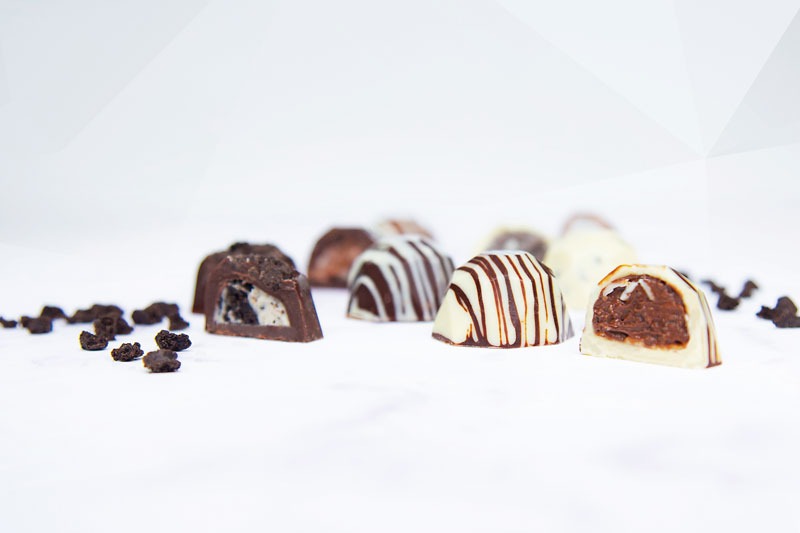
BMB

Bilal Ballout
Partner/CEO,
BMB
“Social media has come to represent the need for creativity. As consumers are bombarded with social media posts daily, our content is aimed at engaging creatively and offering added value to our followers and subscribers. In addition, consumers nowadays have a shorter attention span due to the heavy intake of social media. We have a short window of between four and five seconds only to grab customers’ attention or lose them. This is why our overall strategy revolves around creating catchy and visually appealing content.”

Nick Patterson
Pâtisserie Teaching Chef,
Le Cordon Bleu London
“With social media increasingly influencing all walks of life, individual producers are now posting short videos of items being made in their workplace. These get taken onto more widely viewed social media pages and suddenly their company or product can be seen by millions worldwide within minutes of being posted. This can result in that particular product suddenly being in high demand very quickly and can also set the trend for that particular season which others will follow.”
Bilal Ballout, partner and CEO at BMB, the Dubai-based confectionery business and producers of the Benoit brand, agrees that today’s consumers are looking for something different, prompting producers to add twists to original recipes and be more imaginative in their offerings. “With this in mind, we are always developing something new with unique ingredients and a fusion of unconventional flavors, such as chocolates with ‘riz b halib’ (rice with milk), coffee biscuits and delicious chocolate fillings,” he said.
Major role for methodology
These exciting levels of creativity and innovation evident across production have been made possible by the introduction of highly sophisticated methodology and research end to end.
Serine Jaroudi, marketing manager, BANO Trading, suppliers of raw materials for the chocolate industry, alongside others, highlighted the processes used by Belgian brand Belcolade when creating its exclusive Origins collection, explaining that exclusive flavor profiles have been carefully mapped and created by fermentation masters using unique scientific methodology, titled ‘Les Arômes de Cyrano’.
According to Belcolade, recognizing and understanding the essence of various chocolate flavor profiles allows its experts to help customers create unique products, which provide extraordinary taste experiences. The natural richness and flavor of cocoa is determined by botanical, geological and climatic conditions, combined with local practices, such as fermentation and drying techniques, the brand stated.
Painstaking processes are also adopted at French premium chocolate manufacturer Valrhona to ensure the desired quality is achieved, according to Guillaume Roesz, the Valrhona School’s pastry chef covering the Middle east and Mediterranean area. “More than 200 sampling experts, split into four in-house tasting panels, ensure that we uphold the highest standards of technical skill and flavor,” Chef Roesz told HN. “Since the very beginning, we have developed a unique mastery of our material, with one ambition in mind: to put flavor at the center of all our innovations.”
Seeing red
Industry insiders agree that Ruby chocolate is one of the biggest talking points right now. Touted as the ‘fourth type of chocolate’, Ruby is taking its place alongside the dark, milk and white varieties with which we are all familiar.This exciting creation, introduced recently by Callebaut following its development over more than a decade, marks a huge milestone for the industry, according to Feghali. “The chocolate world has not witnessed an authentic new innovation for more than 100 years, since everything was just a combination of different ingredients or an increase/decrease in certain raw materials,” he said. Feghali explained that this new variety is made from the ruby cocoa bean (varieties of existing botanical cocoa beans) that have been identified as having the right attributes to be processed into ruby chocolate. “The chocolate’s taste is described as ‘sweet, yet sour’ with ‘little to none’ of the cocoa flavor traditionally associated with other varieties of chocolate,” he said. “It is an intense sensorial delight with a tension between berry-fruitiness and luscious smoothness.”
One of the attractions of Ruby chocolate is that its fruity flavor acts as a natural sweetener, which goes down well with today’s health-conscious consumers, according to Nick Patterson, pâtisserie teaching chef at Le Cordon Bleu, London. “The use of artificial sweeteners in chocolates is being explored more – due to heathier lifestyles,” he told HN. “Naturally flavored chocolates are being produced – this being achieved using different refined sugars which impart a different flavor, or via the introduction of a natural flavor during a second fermentation process. For example, fruit pulp is placed with the beans and the flavor is imparted into the beans, resulting in natural passion fruit or strawberry-flavored chocolates.” Ballout believes manufacturers cannot afford to ignore the growing number of consumers looking for healthy substitutes and free-from options in their sweets and desserts. “For Benoit to accommodate the change, we provided solutions that support ‘good-for-you’ sweets, including no-added sugar chocolates, all-natural agave powder, iKal – a 100 percent vegan raw chocolate – and an extensive line of super foods, such as matcha powder, chia seeds and macca powder,” he said.
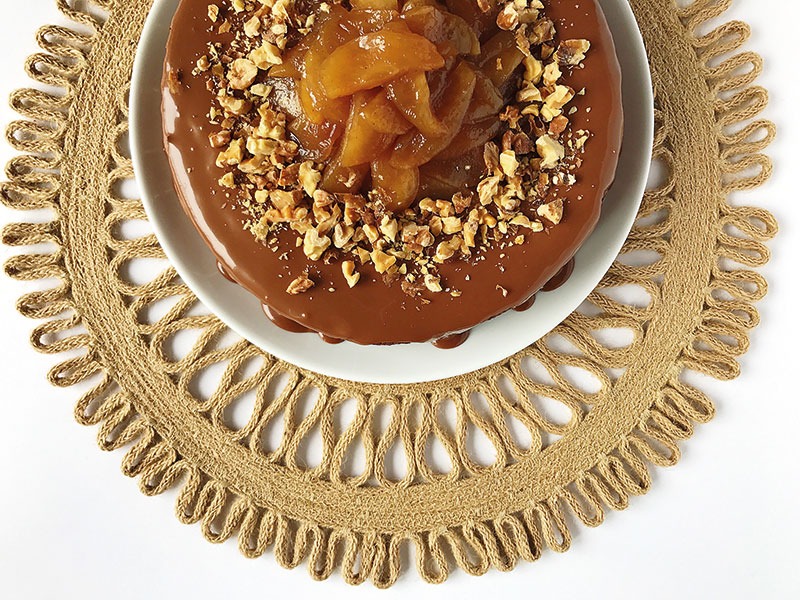
Valrhona
Promoting sustainability
With today’s consumers also keen to know as much about the origins of their food and its ingredients as possible, many chocolate manufacturers are taking the opportunity to highlight the part they are playing in not only improving the final product, but also the livelihoods of farming communities.
Chef Roesz told HN that Valrhona’s sourcers scour the Tropics, from South America to Oceania, to cultivate cocoa, alongside their partner planters, and establish long-term partnerships.
“We currently work in over 30 terroirs in 18 countries,” he said. “We support our partners from the initial sourcing stage right up to the various processes involved in producing cocoa. We are also involved in plenty of corporate social responsibility commitments, such as developing agroforestry in Haiti and supporting a Bali cooperative as it ups the quality of its cocoa and local technical expertise. Our work is not just about launching new chocolates, but increasing awareness around new terroirs so that we can develop crops with immense potential, support producers and secure the cocoa industry a long future.”
Jad Antaki, from Polygel SAL, distributor of Cacao Barry products in Lebanon, explained that to meet rising demand for information from customers on ingredients and other aspects of production, the brand had sharpened its focus on communication and innovative design via packaging.
“As an example, in 2015, Cacao Barry launched a whole new range of packaging that is meant to ensure the protection of cocoa flavors and highlight cocoa knowledge,” he said.
Going solo
Demand for top quality products has seen single-bean varieties of chocolate become another industry buzzphrase.
Chef Patterson told HN that increasing numbers of manufacturers are now including exclusive chocolates within their range to honor a specific region in the world. “These chocolate delights are not blended with various other chocolates, but are made from a single country’s harvested beans,” he said. “They showcase a country’s or region’s many flavors and are welcomed as a ‘grand cru’ product.”
Feghali agreed that the desire for unique, authentic flavors which give the consumer a unique experience had ensured Callebaut and Cacao Barry’s ‘single-origin chocolates’ are very much in vogue. “These products are unique because they owe their flavor and quality to their ‘noble breeding’ or ‘genetic inheritance’, and frequently also to the conditions in the region where they are cultivated or produced,” he added.
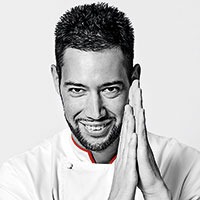
Guillaume Roesz
Valrhona School’s Pastry Chef,
covering the Middle East and Mediterranean area
“Every year, our four Écoles Valrhona and our 30 pastry chefs support over 15,000 professionals across the world. This support is reflected on a daily basis in our individual and group technical consultancy, as well as in our overarching approach that aims to constantly encourage professionals’ creativity. The Cité du Chocolat, with its sensorial and educational remit, allows us to provide a place where all amateur chocolate lovers can discover, learn and experience something new. In this digital era, Valrhona is developing new digital tools and social media presence to update and share creativity, but also to highlight talents and chefs’ creations. We have regional presence, #myvalrhona, #valrhonausa, #valrhonafrance, #valrhonaasiapacific in order to be closer to all the markets and innovations. For us it is a platform to exchange, share experience, expertise and creation with 100 percent transparency and instantly, spreading the word.”
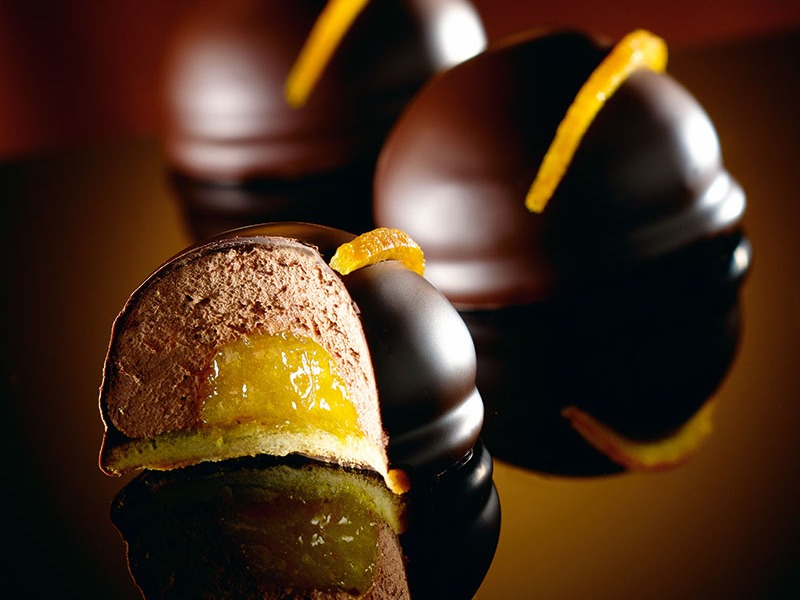
BANO
Sharing information about a product’s origins with consumers and highlighting factoids, such as nuances in taste, makes sense, given the experiential approach to food and interest in where it comes from favoured by the younger generations. “We aim to be trendsetters, sharing innovation and excellence with our customers,” Jaroudi said. “When setting trends, our vision for the chocolatiers and chocolate lovers resides in attaining chocolate origins that are considered the ultimate experience of real Belgian chocolate, reflecting the differences of the regions where they are grown. This will definitely dominate the taste profile of the chocolate market in the future.”
While luxury options are undoubtedly making waves, Chef Patterson believes that traditional flavor combinations or nostalgic flavors “are and will always be” the most popular. “However, this is evolving with each generation, as those nostalgic memories change,” he noted. “What was a popular flavor 20 years ago may not now be the flavor of the current generation.”
Manufacturers also have to deal with the fact that trends can disappear as quickly as they arrive and be replaced by new ideas.
“Consumers are always looking for the ‘next big thing’,” Ballout acknowledged. “Previously, the Oreo flavor was on the rise in the dessert sector, but lately the speculoos flavor is overriding it, which is why Benoit developed the first speculoos cake mix for bakery and cake solutions.” Antaki agreed that staying on top of new trends and being sufficiently flexible to embrace them swiftly was key to success. “Today, top quality chocolates, such as Cacao Barry, are able to set themselves apart from the others because of the determination they have to adapt to the market changes and the constant research of new techniques and methods within the world of cocoa and chocolate,” he said.

Serine Jaroudi
Marketing Manager,
BANO Trading
“Social media has a significant role in bringing closer the ideas, concepts, trends and innovation between the distributor and its customers or ‘chocolatiers’. We depend on delivering the trends we set through our social media platforms due to the high level of interaction we have with our customers.”
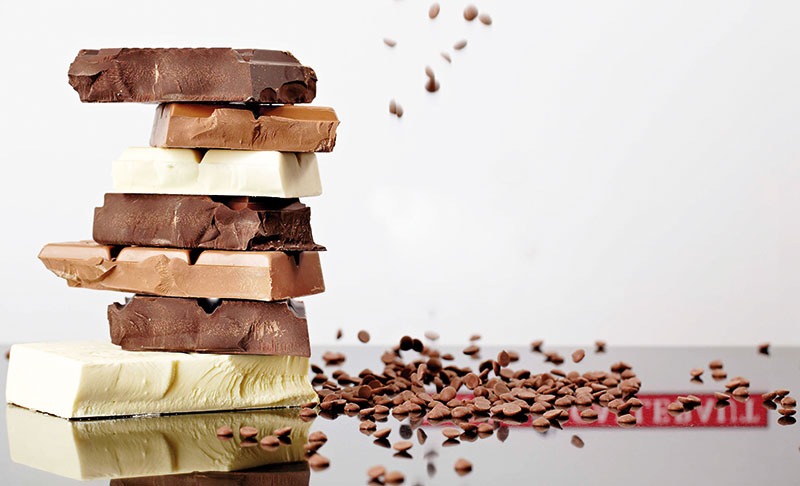
Polygel
CALLING ALL CHOCAHOLIC TRAVELERS
Chocoholics can now indulge their love for all things cocoa-related like never before. A new offering from travel fare aggregator website and travel metasearch engine for lodging reservations Booking.com has taken chocolate innovation to an entirely new level by offering guests the opportunity to stay in a cottage in Paris made completely of chocolate. Designed and manufactured by the renowned artisan master chocolatier and sculptor Jean-Luc Decluzeau, the 18-square-meter, custom-built property stands in the majestic glass house L’Orangerie Ephémère in the picturesque gardens of the Cité de la Céramique in Sèvres. Around 1.5 tons of chocolate have been used to create the fairy-tale-like cottage, from its walls, roof and fireplace to the smaller details, such as the dresser, clock, cups, books and even a chandelier. Decluzeau’s incredible work also extends outside to include a white chocolate duck pond and a painstakingly created chocolate flowerbed.
The good news for guests is that many of the delicious items showcased in the cottage are available to eat. Visitors will also have the opportunity to participate in a unique workshop dedicated to crafting personalized mini chocolate chalets. Vanessa Heydorff, regional director of Booking.com, France, told HN the firm knows that people travel to indulge their passions and are especially inspired by food when making decisions about where to go next. “In fact, in recent research we conducted earlier this year, we found that 61 percent of travellers pick a destination because of its great food and drink,” she noted. Heydorff added that chocolate is beloved the world over, while describing it as a personal favorite indulgence. “Our aim with The Chocolate Cottage is to not only tempt people’s tastebuds, but also to awaken their wanderlust with the possibility of new travel experiences that are just waiting to be discovered and enjoyed,” she said. “What better way to marry the love of food and the joy of travel than in a fantastic and imaginative structure created completely out of cocoa?” Commenting ahead of the launch, Decluzeau confessed that he never thought he’d have the opportunity to build a life-size chocolate cottage that would actually welcome guests. “I’m excited to collaborate with Booking.com and to share my passion for chocolate. I hope guests will relish the chance to experience such a sweet and unique place to stay,” he added.
The chocolate cottage can accommodate four and is available at just 50 euros per night exclusively via Booking.com. However, availability is limited.
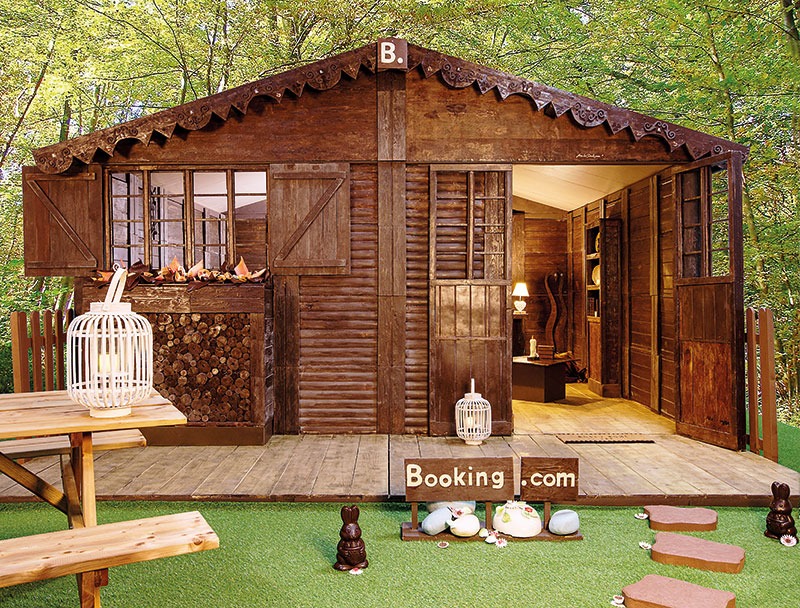

Jad Antaki
General Manager,
Polygel SAL
“Today, social media is an essential and necessary tool in every company’s marketing strategy in order to be able to reach the biggest number of consumers around the world.”














